
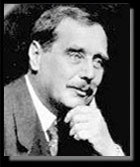
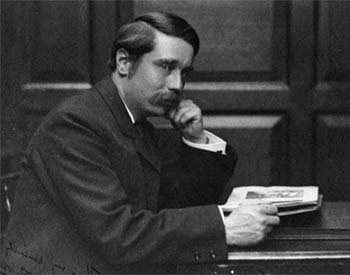

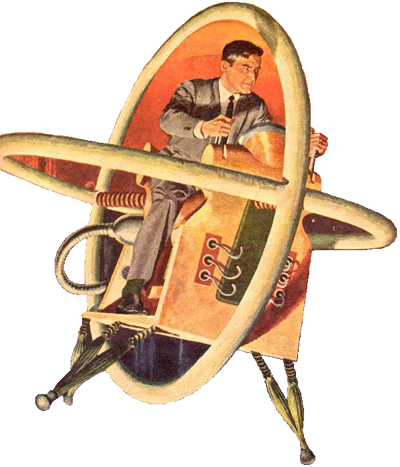
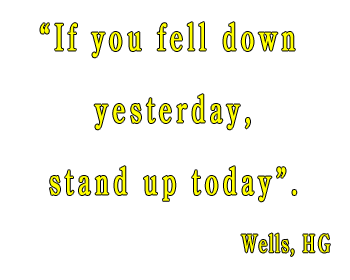
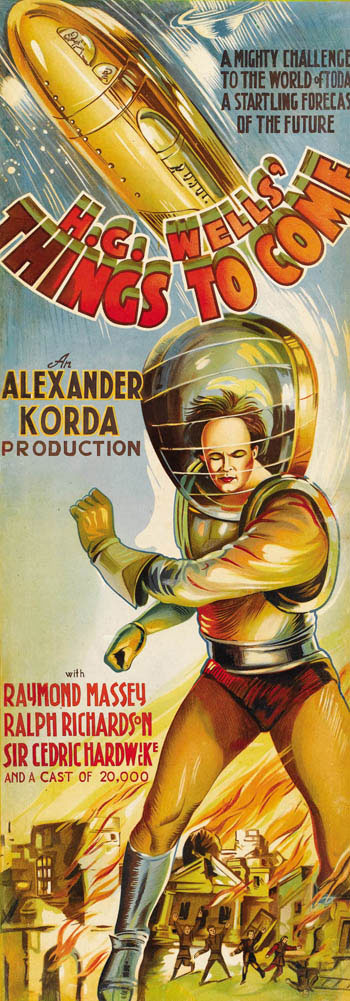

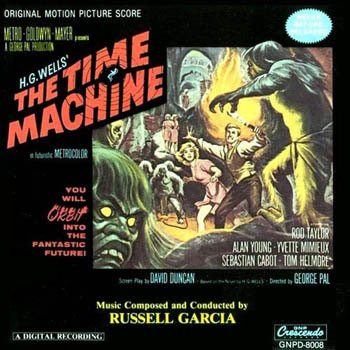
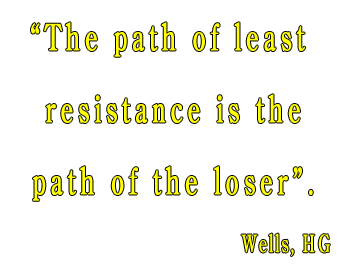
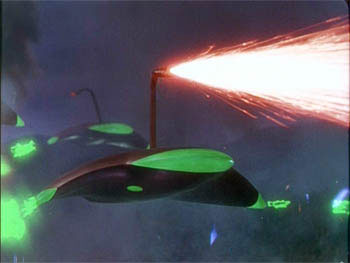
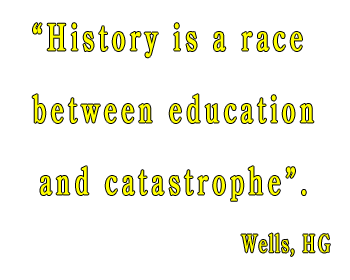
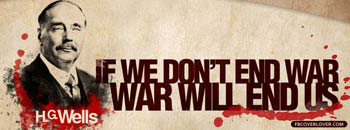

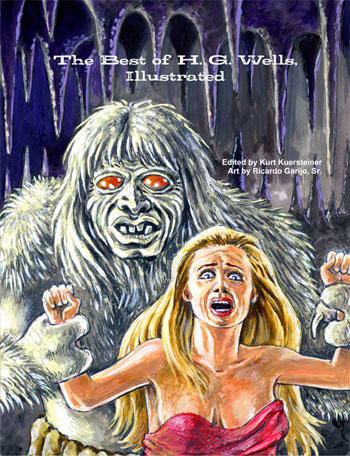

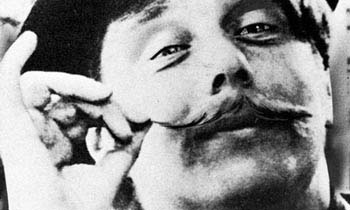

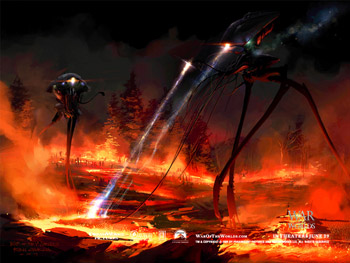

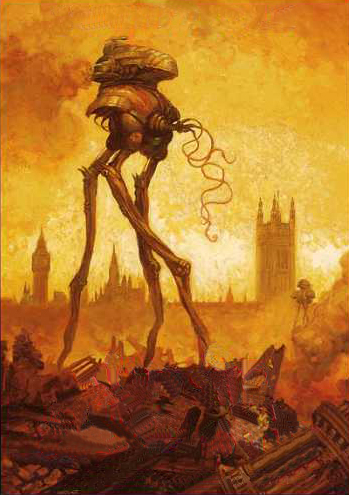

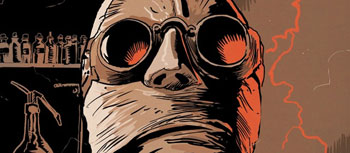

Movies, inspired by H.G. Wells's writings
The History of Mr. Polly (2006)
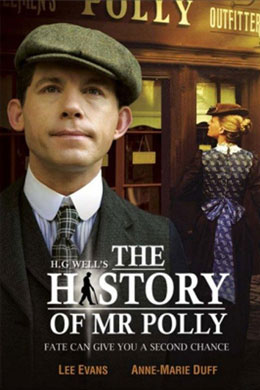
Director Gillies MacKinnin and screenwriter Adrian Hodges team to adapt Victorian author H.G. Wells' intimate drama about a man who has forsaken his dreams to lead a life of suffocating mediocrity. Alfred Polly (Lee Evans) was once a man with truly extraordinary dreams, but unfortunately Alfred has chosen to walk the comfortable path of convention.
Now saddled with a nagging wife (Anne-Marie Duff) and a failing business, Alfred becomes consumed by his own desperation. But no one who strives for a life of simple contentment will ever achieve anything truly extraordinary, and only when Alfred decides to take violent action will he finally realize what it takes for a gutless milquetoast to embrace his inner hero.
~ Jason Buchanan, Rovi
Copyright © 2013 Fandango. All rights reserved.
War of the Worlds (2005)
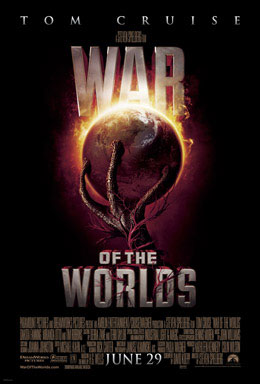
War of the Worlds is a 2005 American science-fiction action film directed by Steven Spielberg and written by Josh Friedman and David Koepp, loosely based on the 1898 novel of the same title by H. G. Wells and jointly produced and released by Paramount Pictures and DreamWorks Pictures. It stars Tom Cruise, Dakota Fanning, Justin Chatwin, Miranda Otto, and Tim Robbins, with narration by Morgan Freeman.
In the film, an American dock worker is forced to look after his children, from whom he lives separately, as he struggles to protect them and reunite them with their mother when extraterrestrials invade the Earth and devastate cities with towering war machines.
From Wikipedia, the free encyclopedia
H.G. Wells' The War of the Worlds (2005)
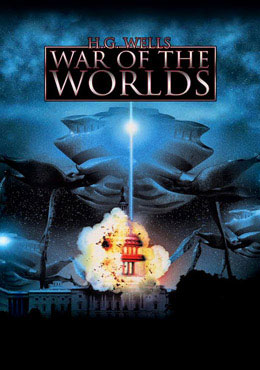
H. G. Wells' War of the Worlds (also known as Invasion and H. G. Wells' The Worlds in War internationally, or simply as War of the Worlds) is a science fiction horror mockbuster by The Asylum. It is one of three 2005 film adaptations of H. G. Wells' 1898 science fiction novel The War of the Worlds.
Much like Steven Spielberg's film version, War of the Worlds is a modernized adaptation, but was released by independent production company The Asylum, whose budget may be more on par with the Pendragon film version. No theatrical release date had been planned; instead the film was a direct-to-DVD release. All three were released in June of the same year. more...
The story tells the experience of an astronomer, George Herbert (C. Thomas Howell), who is separated from his wife and son when a Martian army invades the planet, driving massive "walkers". He tries to make his way to Washington, D.C. to reunite with them as the human race faces extinction.
Unlike other adaptations, The Asylum intended to make this War of the Worlds film a horror film. It was rated R in the United States and 15 in the United Kingdom for strong violence and gore, language and some nudity. Director David Michael Latt describes the film as The Pianist with aliens instead of Nazis, comparing the tale of one man's story of survival.
The DVD was released on June 28, one day before Spielberg's film, and has a few notable stars including C. Thomas Howell, Peter Greene, and Jake Busey. The alternate title of Invasion is likely for the film's overseas distribution since Paramount claim to own exclusive film rights to the War of the Worlds title in the European Union. The film is one of The Asylum's most successful, having sold over 100,000 copies from Blockbuster upon its release. The original poster has a striking resemblance to the Independence Day poster.
The film was followed with a sequel in 2008, War of the Worlds 2: The Next Wave, directed by C. Thomas Howell. less...
From Wikipedia, the free encyclopedia
The Time Machine (2002)
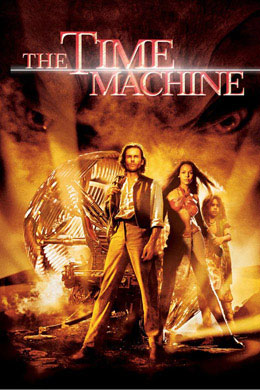
After suffering from a personal tragedy, genius inventor Alexander Hartdegen creates a machine that allows him to travel through time. When he discovers that he can’t change the past, he travels forwards in time and inadvertently finds himself hundreds of thousands of years in the future. Befriending a tribe of primitive people, Alexander discovers that the place he calls home may not be the place he expects it to be.
Loosely based on the classic novel of the same name by H.G. Wells, ‘The Time Machine’ follows Alexander Hartdegen as his scientific curiosity takes him backwards and forwards in time to a world where the moon has been destroyed and civilisation has devolved to a primitive state. His explorative nature and naivety of what the future may hold adds to his appeal as does his chivalrous, gentle nature. more...
The original story of ‘The Time Machine’ is an interesting social commentary of Victorian life and sadly, this is mostly lost on this adaptation which instead focuses on poor special effects. While the future of humanity is explored to some degree, its predictability and lack of insight makes for a rather dull film experience and there is little to differentiate it from other such movies. Once Hartdegen gets to the far future, the movie becomes more ‘Dances With Wolves’ than ‘biting social satire’, and is the poorer for it. Indeed, the rather contrived love story (with leap of logic character decisions), whilst successful in making us engage with Hartdegen, is a tired motivation for him explore time once he decides flat-out saving his fiancée is doomed.
Although ‘The Time Machine’ is watchable, it is very much a disposable and forgettable movie which could be a favourite for kids due to the big stand-out scenes, but is unlikely to have enough substance to keep the adults engaged throughout .less...
From "Is this movie suitable.com" - All Rights Reserved.
The Island of Dr. Moreau (1996)
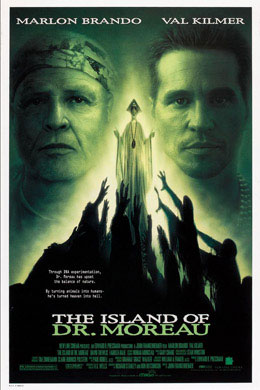
On a remote tropical island, Dr. Moreau has appointed himself ruler over a menagerie of genetic mutants fashioned in his gene-splicing chamber of horrors. The products of his misguided attempt to create a more "pure" human species, the man-beasts worship Moreau as their god and "father" and live by his code of law -- a code rigidly enforced by radio-operated implants in their bodies capable of inflicting pain and death. Into this surreal nightmare arrives UN negotiator Edward Douglas (David Thewlis), the sole survivor of an airplane crash. Douglas is brought ashore on Moreau's island -- against his better judgment -- by the doctor's insane, drug-addled assistant, Montgomery (Val Kilmer), and eventually becomes a prisoner. Horrified by the doctor's monstrous experiments and afraid for his own life, Douglas seeks the aid of Moreau's lovely daughter, Aissa (Fairuza Balk), in escaping the island, but is foiled at every turn by Montgomery and his armed man-beast lackeys. Eventually, the creatures discover the existence of their electronic implants and remove them, providing the opportunity for an armed rebellion -- but eventual regression into their original animal state causes their revolt to collapse into anarchy.
~ Cavett Binion, Rovi
Copyright © 2013 Fandango. All rights reserved.
The Invisible Man (1984 TV series)
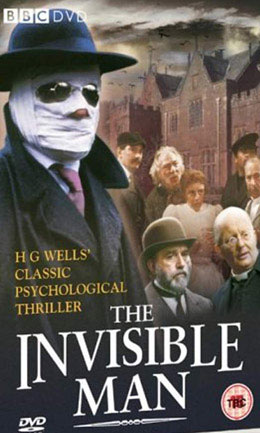
The Invisible Man is a six-part television serial based on the science fiction/fantasy novella by H. G. Wells, screened by the BBC in the UK throughout September and October 1984. It was produced as part of the BBC 1 Classic Serial strand, which incorporated numerous television adaptations of classic novels screened in serial form on Sunday afternoons.
Starring Pip Donaghy in the title role, the series follows the same plot as the original book, of a deranged scientist who discovers a formula by which to make himself invisible, but is driven to insanity by his inability to reverse the formula and is evoked to use his invisibility to terrorize those around him. Out of all the numerous film and TV versions of H. G. Wells' book, this remains to date the most faithful to the original text.
From Wikipedia, the free encyclopedia
The Time Machine (1978)
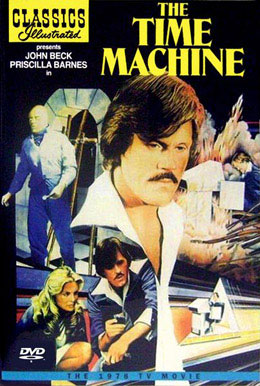
The Time Machine is a 1978 American television film produced by Sunn Classic Pictures as a part of their Classics Illustrated series. Despite updating the plot to take place in the late-1970's, the film, which starred John Beck and Priscilla Barnes, was intended to be a more faithful plot recreation of the original novel by H.G. Wells -- as opposed to the 1960 film adaptation, which took several liberties. The film aired during the November Sweeps on NBC.
The film was a modernization of the Wells' story, making the Time Traveller a 1970s scientist working for a fictional US defense contractor, "the Mega Corporation". Dr. Neil Perry (John Beck), the Time Traveller, is described as one of Mega's most reliable contributors by his senior co-worker Branly (Whit Bissell, an alumnus of the 1960 adaptation). Perry's skill is demonstrated by his rapid reprogramming of an off-course missile, averting a disaster that could destroy Los Angeles. His reputation secures a grant of $20 million for his time machine project. Although nearing completion, the corporation wants Perry to put the project on hold so that he can head a military weapon development project. Perry accelerates work on the time machine, permitting him to test it before being forced to work on the new project.
From Wikipedia, the free encyclopedia
Empire of the Ants (1977)

In the '50s, Bert I. Gordon made a career out of sci-fi movies about gigantic mutated insects (Beginning of the End, Earth vs. the Spider), lizards (King Dinosaur, Serpent Island), and even people (The Amazing Colossal Man), and in 1977, he was still up to his old tricks with this picture, loosely adapted from a story by H.G. Wells. Marilyn Fryser (Joan Collins) is a less than scrupulous businesswoman who is trying to sell shares in a worthless Florida housing development to a group of naive souls. However, both Marilyn and her potential customers have bigger things to worry about than low property values, when they discover that a large stock of nuclear waste was dumped near the development site, and the result is a pack of gigantic mutated ants with a nasty disposition and a taste for human blood. The supporting cast features Robert Lansing, John David Carson, and Albert Salmi.
~ Mark Deming, Rovi - Copyright © 2013 Fandango. All rights reserved.
The Island of Dr. Moreau (1977)
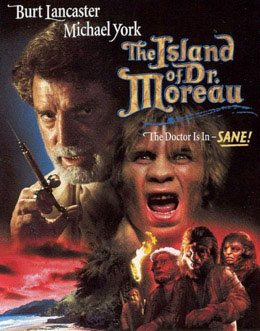
In The Island of Dr. Moreau, which is based on a novella by H.G. Wells, Braddock (Michael York) is a decent young Englishman who has unaccountably been saved from being thrown overboard from a ship sailing in a remote area of the Pacific by the mysterious Dr. Montgomery (Nigel Davenport). Dr. Montgomery is accompanying a cargo of animals destined for a tropical island. At first an "honored guest" (prisoner) on that island, he is finds his contacts with the natives increasingly disturbing, for they are not like any men he has ever seen.
Eventually it transpires that these "men" are experimental reconstructions from wild animals made by a particularly sinister scientist, Dr. Moreau (Burt Lancaster). He feels that he is in danger from the animal/men and from Dr. Moreau himself and does not know where to turn. This story was also filmed in 1933 as The Island of Lost Souls, starring Charles Laughton as the monomaniacal Dr. Moreau and was remade yet again in 1996 with Marlon Brando in the title role.
~ Clarke Fountain, Rovi
Copyright © 2013 Fandango. All rights reserved.
The Food of the Gods (1976)
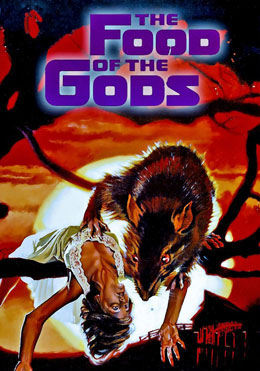
When a strange edible substance appears on a remote island, local farmer Mr. Skinner (John McLiam) and his wife (Ida Lupino) deem it a blessing and feed it to their farm animals. Soon other wildlife such as rodents and insects have eaten the food, which makes anything that consumes it grow in size. These gigantic beasts start terrorizing the island, with an athlete named Morgan (Marjoe Gortner) among those who are fighting for their lives against the gargantuan creatures.
Based on a novel by H. G. Wells, a group of bloodthirsty, oversized creatures (including rats, chickens, wasps, and worms) have taken over a remote island after ingesting a mysterious growth known as "Food of the Gods." It is up to an unusual group of people to put an end to this animal threat.
~ Iotis Erlewine, Rovi
Copyright © 2013 Fandango. All rights reserved.
La Merveilleuse Visite (1976)
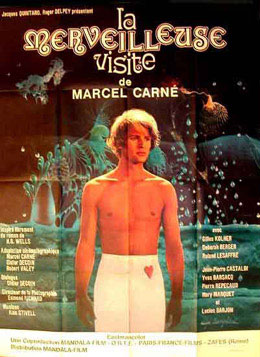
The last of veteran moviemaker Marcel Carne's theatrical films, La Merveilleuse Visite was a surprisingly restrained film by one of the most colorful filmmakers in France. Jean (Gilles Kiher) stars as an angel who has fallen from heaven and landed in a picturesque French village. Nursed back to health by the local priest and his helper, he returns the favor in a surprising fashion. La Merveilleuse Visite is based on a story by H.G. Wells.
~ Hal Erickson, Rovi
Copyright © 2013 Fandango. All rights reserved.
The Invisible Man (1975)
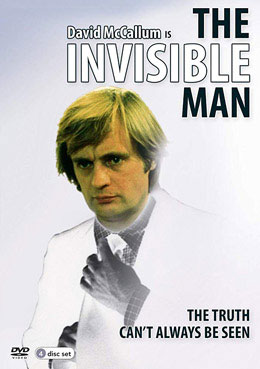
As a scientist working for a government think-tank called the KLAE Corporation, Dr. Daniel Westin creates a formula to be used for matter transformation. To test the formula he uses it on himself. Before he can return to normal he discovers the government wants to use his formula for wrong, so he destroys it. Being unable to become visible again, he and his wife become agents for KLAE fighting crime, while trying to rediscover his formula and return to normal. Machine Malfunction...Westin permanently invisible...Klae Corporation will finance recovery effort...Westin will render services as secret agent. His code name: Klae Resourse.
From Wikipedia, the free encyclopedia
Love and Mr. Lewisham (1972)
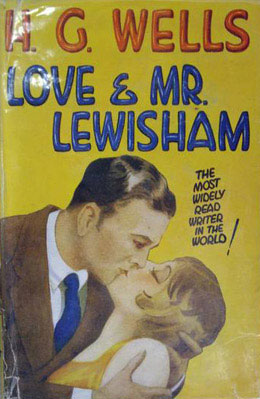
Originally telecast in 1972, the British miniseries Love and Mr. Lewisham was based on the 1900 novel by H.G. Wells, which served as the author's first "non-science-fiction" work. Apparently autobiographical, the story concerned the romantic travails of a British schoolteacher during the early 20th century. Brian Deacon was seen in the title role, with Carolyn Courage as Ethel Henderson. The four 50-minute installments of Love and Mr. Lewisham were beamed out by BBC2.
~ Hal Erickson, Rovi
Copyright © 2013 Fandango. All rights reserved.
Half a Sixpence (1967)
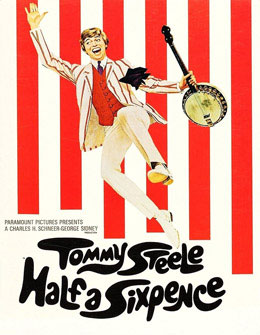
British musical star Tommy Steele had starred in Half a Sixpence in London and on Broadway, thus he was first choice for this garish film version. Based on the H.G. Wells story Kipps (previously filmed in 1941 with Michael Redgrave), Half a Sixpence tells the tale of a humble London drapery clerk (Steele) who inherits a fortune. He briefly forgets his old mates and his faithful girl friend (Julia Foster), but soon discovers that High Society isn't his cup of tea. Filmed during the "monster musical" cycle fostered by The Sound of Music, Half a Sixpence isn't really suited for the spectacular approach dictated by co-producer Charles H. Schneer. Fortunately, the guiding directorial hand is the film's other producer: George Sidney, a veteran of MGM's Arthur Freed unit, who knew how to successfully weld music with story. Thanks to Sidney and star Steele, Half a Sixpence never gets too out of hand, though we'd argue with some of the eyestrain-inducing color choices in the bigger numbers. The film might have done better at the box office had the score yielded a few hit songs.
~ Hal Erickson, Rovi
Copyright © 2013 Fandango. All rights reserved.
Village of the Giants (1965)
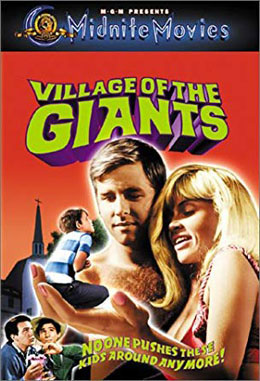
Based on the same H.G. Wells story as his later Food of the Gods, this silly but good-looking fantasy from Bert I. Gordon is among his more entertaining films. The young Ron Howard plays Genius, who develops a substance which causes animals to grow to monstrous size. After eight kids (led by Beau Bridges and Tisha Sterling) crash their car in the mud, they dance and get drunk, then steal some food containing the growth-gunk, causing them to attain huge physical size as well. It's up to the good teens of the town (including Tommy Kirk, Johnny Crawford from The Rifleman, and "Mickey" crooner Toni Basil) to set things right. That involves a gas-like antidote and a lot of subpar musical numbers from the likes of Freddy Cannon and the Beau Brummels. Joseph Turkel and Rance Howard are also in the cast, and a jokey ending features a number of midgets including Felix Silla, best known as Cousin Itt on TV's The Addams Family. The first in a projected 13-picture production deal with Joseph E. Levine, Gordon followed this with the William Castle-inspired Picture Mommy Dead.
~ Robert Firsching, Rovi
Copyright © 2013 Fandango. All rights reserved.
First Men in the Moon (1964)
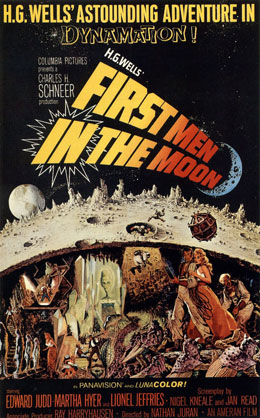
Based on the HG Wells story. The world is delighted when a space craft containing a crew made up of the world's astronauts lands on the moon, they think for the first time. But the delight turns to shock when the astronauts discover an old British flag and a document declaring that the moon is taken for Queen Victoria proving that the astronauts were not the first men on the moon. On Earth, an investigation team finds the last of the Victorian crew - a now aged Arnold Bedford and he tells them the story of how he and his girlfriend, Katherine Callender, meet up with an inventor, Joseph Cavor, in 1899. Cavor has invented Cavorite, a paste that will allow anything to deflect gravity and he created a sphere that will actually take them to the moon. Taking Arnold and accidentally taking Katherine they fly to the moon where, to their total amazement, they discover a bee-like insect population who take an unhealthy interest in their Earthly visitors...
Copyright © 1990-2013 IMDb.com, Inc.
The Alfred Hitchcock Hour: The Magic Shop (1964)
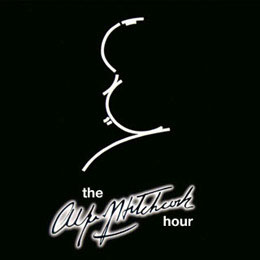
Adapted by John Collier from a story by H.G. Wells, this episode is built around the talents of child actor John Megna, best remembered for his role as the Truman Capote counterpart in the 1962 film To Kill a Mockingbird. Obsessed by magic and magicians, Tony Grainger (Megna) begs his father, Steven (Leslie Nielsen), to take him to Mr. Dulong's magic shop as a ninth birthday present. What seems to be a harmless excursion into the black arts becomes something else entirely when Tony steps into a magic cabinet and temporarily disappears -- followed by Mr. Dulong (David Opatoshu), who disappears for keeps.
~ Hal Erickson, Rovi
Copyright © 2013 Fandango. All rights reserved.
The Time Machine (1960)
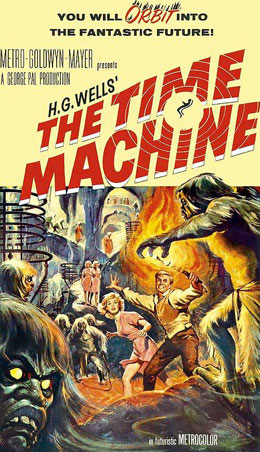
Scientist H. George Wells (Rod Taylor) builds a time machine, and despite the warning from his friend David (Alan Young) against "tempting the laws of providence," decides to visit the future. Jumping ahead 14 years, he observes changes in women's fashion. Jumping ahead 40, he meets David's son (also Young) amid a terrible war. Finally, he travels thousands of years ahead to discover a post-apocalyptic world inhabited by humanoid Eloi and the monstrous Morlocks that feed on them.
In George Pal's version of the H.G. Wells classic, Rod Taylor stars as George, a young scientist fascinated with the concept of time travel. On December 31, 1899, George seats himself in his jerry-built time machine and thrusts himself forward into 1917. A dyed-in-the-wool pacifist, George is distressed to see that World War I is raging all about him. He moves past the 1920s and 1930s into the 1940s, only to be confronted by another, even more terrible war. more...
Next he stops in 1966, just as London is destroyed in a nuclear explosion. Retreating to his Time Machine, George is sealed in his cellar by molten lava. By the time he and his machine manage to escape their tomb, the year is 802,701. Looking around, George observes a seemingly idyllic world populated by gentle people. But he also notices that the citizens of the future, known as "Elois," behave more like mindless sheep than human beings. Befriending the lovely Weena (Yvette Mimieux), George learns to his dismay that humankind has forgotten all that it has learned through the centuries, preferring instead to frolic endlessly under the sun. Plot holes and inconsistencies abound in The Time Machine, but the film's true selling points was its Oscar-winning special effects; in this respect, producer-director Pal succeeded beyond anyone's wildest dreams.
Another plus: the haunting musical score by Russell Garcia. less...
~ Hal Erickson, Rovi
Copyright © 2013 Fandango. All rights reserved.
Terror Is a Man (1959)
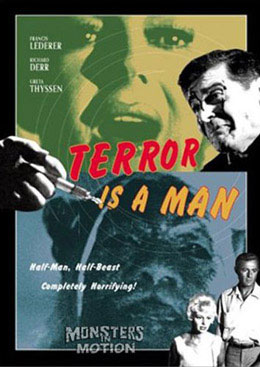
A man who was the lone survivor of a shipwreck is rescued, only to discover that he's in greater danger than ever before in this horror story inspired by H.G. Wells' The Island of Dr. Moreau. After his ship sinks in the midst of an ocean crossing, William Fitzgerald (Richard Derr) is near death when he finds his way to a remote island off the shore of Peru. Fitzgerald is discovered and given shelter by Dr. Girard (Francis Lederer), a scientist who has set up a lab on the island with his wife Frances (Greta Thyssen). It seems that most of the natives have fled the island in fear of what Girard is doing, and Fitzgerald soon discovers why -- the doctor has unusual theories about the links between humans and animals, and he has performed bizarre experiments on a panther that has transformed the feline into a man. The creature has gotten loose from Girard and now prowls the island with a thirst for blood; Fitzgerald's danger is only increased when he discovers that Frances has fallen in love with him. Terror Is a Man was also distributed under the titles Blood Creature, Creature from Blood Island, and The Gory Creatures.
~ Mark Deming, Rovi
Copyright © 2013 Fandango. All rights reserved.
The New Invisible Man (1958)
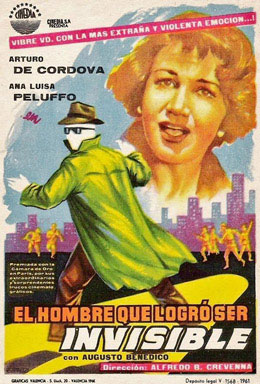
Mexican filmmaker Alfredo B. Crevenna directed this sci-fi thriller loosely based on the classic H.G. Wells novel. Augusto Benedico stars as Luis, a scientist who gives his new invisibility formula to his jailed brother, Carlos (Arturo de Cordova). Carlos escapes and is reunited with his beloved Beatriz (Ana Luisa Peluffo), but the invisibility potion turns him into an insane megalomaniac who plans to rule the world.
The invisible madman murders Luis and begins committing acts of sabotage until Beatriz tricks him into a standoff with police. This overwrought version of the tale makes an interesting contrast with James Whale's 1933 version of the same story, which seems positively subdued by comparison.
~ Robert Firsching, Rovi
Copyright © 2013 Fandango. All rights reserved.
The Invisible Man (1958 TV series)
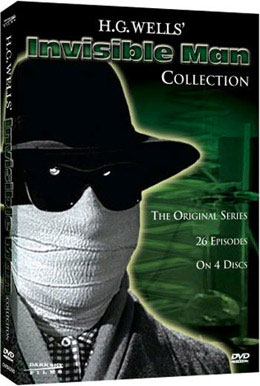
The Invisible Man (later known as H.G. Wells' Invisible Man) is a British science fiction/adventure/espionage television series that aired on ITV from September 1958 to July 1959. The series was networked on CBS in the United States. It ran for 26 half-hour black-and-white episodes for two series and was nominally based on the novel by H. G. Wells, one of four such television series.
The deviation from the novel went as far as changing the main character's name from Dr. Griffin to Dr. Peter Brady who, in this version, remained a sane man, not a power-hungry lunatic as in the book or the 1933 film adaptation. None of the other characters from the novel appeared on the series. more...
The series follows the adventures of Dr. Peter Brady, a scientist who is attempting to achieve invisibility with light refraction – a completely different technique than the protagonist of the novel utilized. However, the experiment goes wrong and turns him permanently invisible. He is initially declared a state secret and locked up, but eventually convinces the UK government, represented by Sir Charles Anderson, to allow him to return to his laboratory and search for an antidote ("Secret Experiment").
Almost immediately, British Intelligence recruits him for an assignment ("Crisis in the Desert"), but soon security is breached ("Behind the Mask") and he becomes a celebrity ("Picnic with Death"), consequently also using his invisibility to help people in trouble, as well as solve crimes and defeat spies for his country. less...
From Wikipedia, the free encyclopedia
The Door in the Wall (1956)
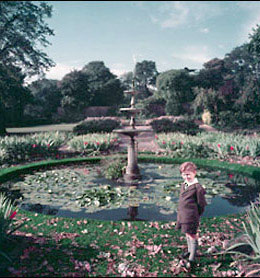
A man is haunted throughout his life, by a magical door that opens onto an alternate, Garden-of-Eden like world.
Based on a story by H.G. Wells, 'The Door in the Wall' is narrated by Ian Hunter, who plays Redmond, the friend of a rather nervous man named Lionel (Stephen Murray). Redmond and Lionel have known each other since school days, yet in all that time Lionel has always seemed to be ... haunted by something.
Now, in flashback, Lionel describes what has been haunting him. more...
As a very young child, before he entered school, Lionel discovered one day a green door in a wall. Opening the door and passing through, he found himself in a magical garden filled with beautiful flowers, friendly creatures and a smiling woman. Fearing that his strict father would be angry, young Lionel left the garden ... intending to return.
On several more occasions, throughout his path to manhood, Lionel encountered the same green door ... always in a different wall, and never appearing at any predictable schedule. On each occasion, he was so weighed by his burdens of responsibility (first as a schoolboy, then as a university student, later as a professional) that he could never bring himself to re-enter the garden, always hoping to have another opportunity on some later occasion when his responsibilities were not quite so pressing.
As the flashback ends, Lionel conveys to Redmond his fear that he will never again have a chance to enter the beautiful garden. SPOILERS COMING NOW. That night, wandering the streets alone, Lionel passes a familiar wall and encounters a green door that was not there the previous day. Resolutely, he opens it and steps through. The next morning, Redmond learns that his friend Lionel has been found dead at the bottom of a railway cutting. The door was installed by labourers to give them access to the excavation. Redmond is left to wonder if perhaps Lionel's childhood garden is the real world, and our own reality is the illusion.
This film captures the wistful mood of Wells's story yet makes several changes. In the original story, the child Lionel enters the garden and is greeted by two friendly panthers. (H.G. Wells seems to have had a cat fetish: in his erotic letters to Dame Rebecca West, he fantasised himself and Rebecca as a pair of jaguars.) In this film version, when Lionel enters the magic garden, he encounters a large friendly brontosaurus. Regrettably, the minuscule production budget makes it clear that this dinosaur is merely a large plaster replica.
'The Door in the Wall' is a fascinating film, with a beautiful story to tell. I'm astonished to find no other credits for Glenn Alvey, who directed this film from his own screenplay adaptation of Wells's story. Apparently, Alvey was more interested in developing the Dynamic Screen process than in conventional film-making. less...
by F Gwynplaine MacIntyre (Minffordd, North Wales). All rights reserved.
The War of the Worlds (1953)
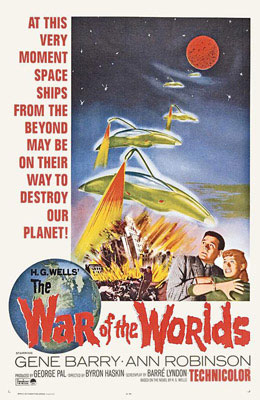
H.G. Wells's War of the Worlds had been on the Paramount Pictures docket since the silent era, when it was optioned as a potential Cecil B. DeMille production. When Paramount finally got around to a filming the Wells novel, the property was firmly in the hands of special-effects maestro George Pal. Like Orson Welles's infamous 1938 radio adaptation, the film eschews Wells's original Victorian England setting for a contemporary American locale, in this case Southern California.
A meteorlike object crash-lands near the small town of Linda Rosa. Among the crowd of curious onlookers is Pacific Tech scientist Gene Barry, who strikes up a friendship with Ann Robinson, the niece of local minister Lewis Martin. more...
Because the meteor is too hot to approach at present, Barry decides to wait a few days to investigate, leaving three townsmen to guard the strange, glowing object. Left alone, the three men decide to approach the meterorite, and are evaporated for their trouble. It turns out that this is no meteorite, but an invading spaceship from the planet Mars. The hideous-looking Martians utilize huge, mushroomlike flying ships, equipped with heat rays, to pursue the helpless earthlings.
When the military is called in, the Martians demonstrate their ruthlessness by "zapping" Ann's minister uncle, who'd hoped to negotiate a peaceful resolution to the standoff. As Barry and Ann seek shelter, the Martians go on a destructive rampage. Nothing-not even an atom-bomb blast-can halt the Martian death machines.
The film's climax occurs in a besieged Los Angeles, where Barry fights through a crowd of refugees and looters so that he may be reunited with Ann in Earth's last moments of existence. In the end, the Martians are defeated not by science or the military, but by bacteria germs-or, to quote H.G. Wells, "the humblest things that God in his wisdom has put upon the earth." Forty years' worth of progressively improving special effects have not dimmed the brilliance of George Pal's War of the Worlds.
Even on television, Pal's Oscar-winning camera trickery is awesome to behold. So indelible an impression has this film made on modern-day sci-fi mavens that, when a 1988 TV version of War of the Worlds was put together, it was conceived as a direct sequel to the 1953 film, rather than a derivation of the Wells novel or the Welles radio production. less...
~ Hal Erickson, Rovi
Copyright © 2013 Fandango. All rights reserved.
The Passionate Friends (1949)
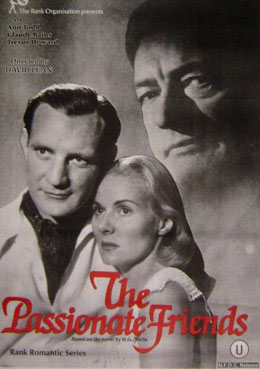
David Lean directed this romantic drama, scripted by Eric Ambler from a novel by H.G. Wells. Mary Justin (Ann Todd) is married to wealthy financier Howard Justin (Claude Rains), and while their marriage allows her to lead a comfortable lifestyle, there's little excitement in their relationship. While visiting Switzerland, Mary happens to run into Steve Stratton (Trevor Howard), with whom she was romantically involved years before she wed Howard. Mary finds herself falling for Steve once again, and she has to decide if she should leave her husband in hope of finding real passion or stay with a man who treats her well but whom she does not love. Leading lady Ann Todd married David Lean the same year this was released; it was the first of three films they would make together prior to their divorce in 1957.
~ Mark Deming, Rovi
Copyright © 2013 Fandango. All rights reserved.
The History of Mr. Polly (1949)
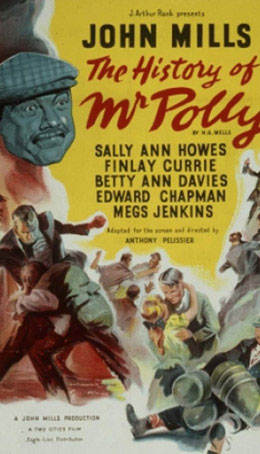
H. G. Wells' non-fantasy efforts have, with the exception of Kipps, proven traditionally difficult to transfer to film. History of Mr. Polly occasionally suffers from too-close fidelity to its Wellsian source; one wishes that adaptor/director Anthony Pelissier could have "opened up" the story a bit more. Still, the film is impeccably cast: particularly good is John Mills as Alfred Polly, whose efforts to make a go in the business world continually come acropper. A humble draper's clerk, Polly is profoundly affected by a variety of personal relationships, most notably with colorful Uncle Jim (Finlay Currie) and his nagging wife Miriam (Betty Ann Davies). Ultimately, he finds happiness in an even humbler pursuit than the drapery business. Star John Mills' daughter Juliet shows up in a very minor role.
~ Hal Erickson, Rovi
Copyright © 2013 Fandango. All rights reserved.
Dead of Night (1945)
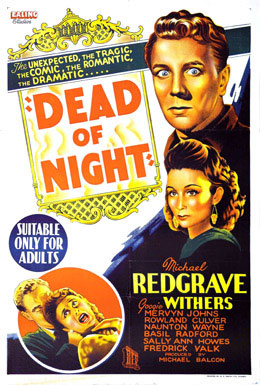
Considered the greatest horror anthology film, the classic British chiller Dead of Night features five stories of supernatural terror from four different directors, yet it ultimately feels like a unified whole. The framing device is simple but unsettling, as a group of strangers find themselves inexplicably gathered at an isolated country estate, uncertain why they have come. The topic of conversation soon turns to the world of dreams and nightmares, and each guest shares a frightening event from his/her own past. Many of these tales have become famous, including Basil Dearden's opening vignette about a ghostly driver with "room for one more" in the back of his hearse. Equally eerie are Robert Hamer's look at a haunted antique mirror that gradually begins to possess its owner's soul, and Alberto Cavalcanti's ghost story about a mysterious young girl during a Christmas party. Legendary Ealing comedy director Charles Crichton lightens the mood with an amusing interlude about the spirit of a deceased golfer haunting his former partner, leaving viewers vulnerable to Cavalcanti's superb and much-imitated closing segment, about a ventriloquist (Michael Redgrave) slowly driven mad when his dummy appears to come to life. Deservedly acclaimed and highly influential, Dead of Night's episodic structure inspired an entire genre of lesser imitators.
~ Judd Blaise, Rovi
Copyright © 2013 Fandango. All rights reserved.
The Invisible Man's Revenge (1944)
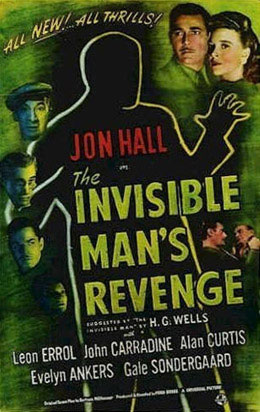
After escaping from a Capetown mental institution, psychopathic murderer Robert Griffin returns to London to seek revenge upon the Herrick family. Meanwhile, the unsuspecting Sir Jasper and Lady Irene Herrick entertain their daughter Julie's new beau, newspaper reporter Mark Foster at their home.
After Julie and Mark leave, Robert meets with Jasper and Irene and accuses them of abandoning him when he was injured on an African safari. The Herricks profess their innocence, arguing that the native guides had told them that Robert was dead. Robert demands his share of the diamond fields discovered on the safari, but Jasper tells him that they were lost in a series of bad investments. more...
When Robert threatens to sue the Herricks, they offer to share their Shortlands estate with him, but he suggests an arranged marriage between himself and Julie instead. Robert then passes out and the Herricks quickly realize that their old friend has become dangerously insane. After removing their partnership agreement from Robert's jacket, Jasper throws Robert out of the house. Later, the semi-conscious Robert is saved from drowning by a Cockney cobbler named Herbert Higgins. When Herbert attempts to blackmail the Herricks, Jasper calls the chief constable, Sir Frederick Travers, who dismisses Robert's claims against the Herricks and orders him to leave the district.
On his way back to London, Robert arrives at the home of Dr. Peter Drury, a reclusive scientist who has invented a formula for invisibility. Drury agrees to inject Robert with the experimental formula, unaware that the murderer plans to use his newfound invisibility against the Herricks. Robert later forces Jasper to sign over his entire estate, then helps Herbert win his rent money in a dart game at a local inn. After Jasper promises Robert his daughter's hand in marriage if he regains his visibility, the madman returns to Drury's laboratory, where he sees the doctor restore the visibility of his dog Brutus through a blood transfusion.
After Drury tries to call the police for help, Robert knocks the scientist unconscious and performs the transfusion himself, which leads to the doctor's death. The now-visible Robert sets the laboratory afire and escapes just as Mark arrives with the police. Returning to the Herrick estate, Robert assumes the alias of "Martin Field" and moves in with the Herricks. Herbert later arrives at the estate, and despite his feeble attempt to blackmail Robert, the murderer offers to pay his old friend 1,000 pounds to kill Brutus, who has followed Robert to the Herricks'.
When Robert begins to lose his visibility while having breakfast with Julie and Mark, he lures Mark into the wine cellar, knocks the reporter unconscious and begins a second blood transfusion. Travers, however, arrives at the estate, having learned of Robert's presence from cab driver Al Prouty, and with the help of Herbert and Jasper, they break down the cellar door just in time to save Mark. Robert, in turn, is mauled to death by Brutus. After Mark recovers, Jasper declares that Robert, with his mind clouded by imaginary enemies, received his just desserts. less...
TM & © 2013 Turner Entertainment Networks, Inc.
A Time Warner Company. All rights reserved.
Kipps (1941)
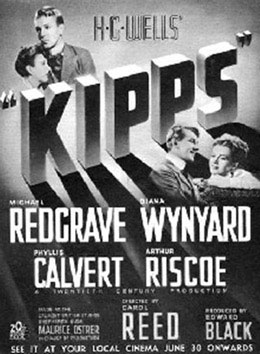
Carol Reed directed this adaptation of the H.G. Wells novel about a British shopkeeper who inherits money and tries to crash society; it was later the basis of the Tommy Steele musical Half a Sixpence. Michael Redgrave is Arthur Kipps, a nondescript storekeeper who finds himself heir to a large fortune. Society golddigger Helen Walshinham (Diana Wynyard) immediately comes on the scene, hoping to trick Kipps into marrying her. Right before the wedding, Kipps gets cold feet and instead runs off with his childhood sweetheart, Ann Pornick (Phyllis Calvert). The two get married but Ann wants to live simply while Kipps continues to want to live large with his inherited fortune.
~ Paul Brenner, Rovi
Copyright © 2013 Fandango. All rights reserved.
Things to Come (1936)
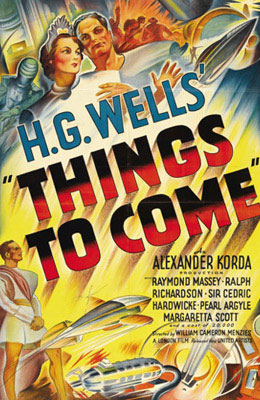
It's Christmas 1940, and Everytown resident John Cabal (Raymond Massey) fears that war is imminent. When it breaks out, the war lasts 30 years, destroying the city and ushering in a new dark age of plagues and petty despots. But there is hope in the form of Wings Over the World, a group of pacifist scientists and thinkers lead by Cabal. Their dream is to build a utopian society on the ruins of the old. But first they'll have to unseat the latest ruling tyrant (Ralph Richardson).
H. G. Wells was both the author of the original source -- an essay, rather than an actual novel, concerning mankind's future -- and the screenplay (in conjunction with Lajos Biro) of this epic science fiction tale, but it was producer Alexander Korda who framed the terms on which it is presented, vast and elegant, and visually striking. Opening in the year 1940, we see the next century of human history unfold, initially with amazing prescience. In Everytown (a stand-in for London) in 1940, the people prepare to celebrate Christmas amid rumors and rumblings of war -- forward-thinking pacifists like John Cabal (Raymond Massey) try to raise concerns amid a populace either too fearful to think about the risks, or so pleased with business conditions that they're oblivious to the downside of war. more...
And then it comes, devastating Everytown (in scenes shockingly close to the actual World War II London blitz, a half-decade away when these scenes were written) and the country, and finally the world. After 30 years, the war goes on, except that there are no more nations to fight it, only isolated petty fiefdoms ruled by brigand-like strongmen, running gangs organized like tiny armies. Among the most ruthless and successful of them is Rudolph (Ralph Richardson), who runs what's left of Everytown. He keeps his people in line by force, and his war with his neighbors going with his bedraggled troops, while pressuring the tiny handful of scientists, mechanics, and pilots to keep as many of the aging, decrepit planes as they can operating. A few educated men around him -- whom he doesn't really trust -- try to resist the worst of his plans and orders, while going through the motions of carrying them out. And then, one day, out of the sky comes a plane the like of which they've never seen before, sleek and fast, and piloted by a mysterious man whom Rudolph orders imprisoned. It is John Cabal, older but just as dedicated to the cause of peace, and ready to fight for it.
He announces the existence of a new order, run by a society of engineers and scientists, called Wings Over The World, here to re-establish civilization. Rudolph will hear none of it, thinking instead to use Cabal's plane and those of any of his friends who follow as weapons of war -- but Rudolph's wife Roxana (Marguerite Scott) sees the wisdom of what Cabal offers and helps him. The bombers of Wings Over The World drop the Gas of Peace, which puts the entire population of Everytown to sleep -- all except Rudolph, who goes down fighting and dies -- allowing the army of the Airmen to enter and free the city.
Seventy years go by, during which the Earth is transformed and a new civilization rises, led by scientists and engineers. Immense towers now rise into the sky, and the population is freed from most of the concerns that ever led to it war. In fact, a new complacency starts to take hold amid a populace for whom most needs are now easily met -- all except the leaders, engineers who keep advancing, year after year, with new projects and goals. And now, having conquered the Earth and all of the challenges it has to offer, Oswald Cabal (Raymond Massey), the great-grandson of John and the current leader, is about to embark on the grandest project of all, moving into deep space.
The first launch of a manned vehicle, fired by the Space Gun, is about to take place. But there is discontent being spread by the sculptor Theotocopulos (Cedric Hardwicke), who is weary and distressed from this constant push toward new advances and progress -- he wants mankind to reassert itself over this ever-advancing technology, and sees the Space Gun and all it represents as a new threat. In a speech, he exhorts the restive populace to stop the launch. They proceed, en masse, to attack the Space Gun, while Cabal struggles to beat them to their objective and take the next bold step into space. "All of the Universe," he declares, "or nothing -- which shall it be?" less...
~ Bruce Eder, Rovi
Copyright © 2013 Fandango. All rights reserved.
The Man Who Could Work Miracles (1936)
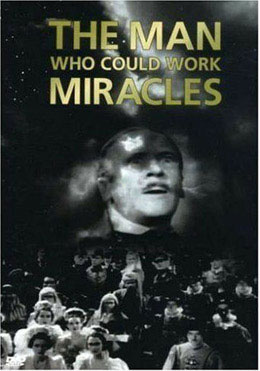
As a result of a discussion between a trio of gods over the true worthiness of Earth, a retiring British shop assistant is granted miraculous powers in this fantasy based on an H.G. Wells story. Roland Young stars as George McWhirter Fotheringay, whose new powers are virtually limitless; choosing to use them for good, he sets out to create a utopian society. Still, despite a succession of miraculous deeds, George's plans to cure all of the world's ills is met with disbelief. As proof of his power, George wills the earth to stop spinning on its axis, which results in its citizens flying off the planet into space. Because George is indestructible, he is able to shout out his last wish, which restores the world--and George himself--back to normal.
~ Jason Ankeny, Rovi
Copyright © 2013 Fandango. All rights reserved.
The Invisible Man (1933)
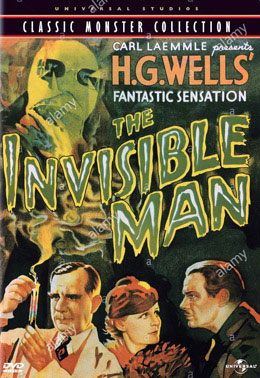
While researching a new drug, Dr. Jack Griffin (Claude Rains) stumbles on a potion that can make him invisible. When he reveals his new ability to his old mentor (Henry Travers) and his fiancée (Gloria Stuart), it's clear that a side effect of the potion is insanity. Jack goes on a violent rampage, and the police struggle to hunt him down, unable to see their target, while his mentor and his former partner (William Harrigan) desperately try to devise a plan to capture him.
A mysterious stranger, his face swathed in bandages and his eyes obscured by dark spectacles, has taken a room at a cozy inn in the British village of Ipping. Never leaving his quarters, the stranger demands that the staff leave him completely alone. Working unmolested with his test tubes, the stranger does not notice when the landlady inadvertently walks into his room one morning. But she notices that her guest seemingly has no head! more...
The stranger, one Jack Griffin, is a scientist, who'd left Ipping several months earlier while conducting a series of tests with a strange new drug called monocane. He returns to the laboratory of his mentor, Dr. Cranley (Henry Travers), where he reveals his secret to onetime partner Dr. Kemp (William Harrigan) and former fiancee Flora Cranley (Gloria Stuart). Monocane is a formula for invisibility, and has rendered Griffin's entire body undetectable to the human eye. Alas, monocane has also had the side effect of driving Griffin insane. With megalomanic glee, Griffin takes Kemp into his confidence, explaining how he plans to prove his superiority over other humans by wreaking as much havoc as possible. At first, his pranks are harmless; then, without batting an eyelash, he turns to murder, beginning with the strangling of a comic-relief constable. When Kemp tries to turn Griffin over to the police, he himself is marked for death.
Despite elaborate measures taken by the police, Griffin is able to murder Kemp, considerately taking the time to describe his homicidal methods to his helpless victim. After a reign of terror costing hundreds of lives, Griffin is cornered in a barn, his movements betrayed by his footsteps in the snow. Mortally wounded by police bullets, Griffin is taken to a hospital, where he regretfully tells Flora that he's paying the price for meddling into Things Men Should Not Know.
As Griffin dies, his face becomes slowly visible: first the skull, then the nerve endings, then layer upon layer of raw flesh, until he is revealed to be Claude Rains, making his first American film appearance. So forceful was Rains' verbal performance as "The Invisible One" that he became an overnight movie star (after nearly twenty years on stage). Wittily scripted by R.C. Sherriff and an uncredited Philip Wylie, and brilliantly directed by James Whale, The Invisible Man is a near-untoppable combination of horror and humor.
Also deserving of unqualified praise are the thorouhgly convincing special effects by John P. Fulton and John Mescall. With the exception of The Invisible Man Returns, none of the sequels came anywhere close to the quality of the 1933 original. Trivia alert: watch for Dwight "Renfield" Frye as a bespectacled reporter, Walter Brennan as the man whose bicycle was stolen, and John Carradine as the fellow in the phone booth who's "gawt a plan to ketch the h'invisible man." less...
~ Hal Erickson, Rovi
Copyright © 2013 Fandango. All rights reserved.
Island of Lost Souls (1932)
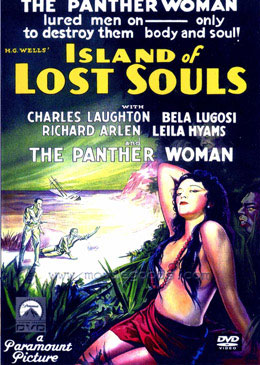
In this adaptation of H.G. Wells' novel "The Island of Doctor Moreau," Edward Parker (Richard Arlen) is shipwrecked on a remote island presided over by the mysterious Dr. Moreau (Charles Laughton). Edward discovers his host is conducting genetic experiments, and presiding over a race of half-human, half-animal hybrids, including the alluring Panther Woman and the sage Sayer of the Law (Bela Lugosi). The island has become its own society, with Moreau as its god.
This first film version of H.G. Wells' Island of Dr. Moreau stars Charles Laughton as Dr.Moreau, a dedicated but sadly misguided scientist who rules the roost on a remote island. Shipwrecked sailor Edward Parker Richard Arlen finds himself on Moreau's island, agreeing to stick around until another boat can come along and take him home. But that's not quite what Moreau has in mind: he'd rather Parker stay on the island and marry the exotic Lota (Kathleen Burke), who curiously possesses the characteristics of the panther. more...
In fact, all the island's natives seem more animal than human, especially the hirsute Bela Lugosi. And why not? They are animals who've been transformed by Moreau into humanlike creatures via surgery. Moreau's plans to mate Parker and Lota are complicated by the arrival of Parker's fiancee Leila Hyams, who has been brought to the island by ship's captain Stanley Fields, one of Moreau's flunkies. When Moreau kills Fields for this insubordination, he makes the mistake of breaking one of the rules he himself has imposed on the island: That no creature shall kill another.
Island of Lost Souls does its job of inducing goosebumps so well that one can forgive the cherubic excesses of Charles Laughton in his portrayal of Dr. Moreau. The film would be remade under Wells' original title in 1978, with Burt Lancaster in the Laughton role. less...
~ Hal Erickson, Rovi
Copyright © 2013 Fandango. All rights reserved.
Marriage (1927)
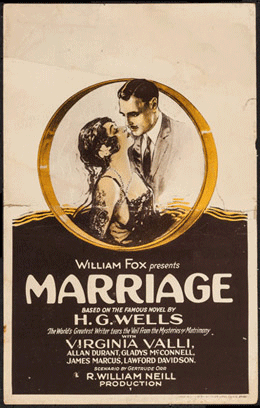
Believe it or not: The domestic drama Marriage was based on a story by H.G. Wells. Alan Durant plays scientist R.A.G. Trafford, whose idealism loses him one high-paying job after another. Durant's ambitious wife Marjori (Virginia Valli) talks Trafford into selling his latest revolutionary scientific formula, rather than donating it gratis to the world. He does so, whereupon husband and wife become millionaires overnight. Disgusted by Marjori's new hedonistic lifestyle, Trafford walks out on her and embarks upon a research expedition to darkest Africa. Marjori anxiously trails after her husband, at last rekindling their love when she saves his life. Posterity does not record what H.G. Wells had to say about this filmization of his novel, but one suspects he wasn't happy that his complex plotline was jammed into 56 minutes' running time.
~ Hal Erickson, Rovi
Copyright © 2013 Fandango. All rights reserved.
The Passionate Friends (1922)
This implausible drama finds a jilted suitor getting married to another woman. She agrees to the union in spite of her knowledge that her intended still loves the woman who left him. The one who left marries another man, but her husband remains jealous of the man she jilted and files for divorce. The distraught object of both men's affections kills herself rather than be the subject of scandal. Though taken from a novel by H.G. Wells, the story is not a science fiction tale.
~ Dan Pavlides, Rovi
Copyright © 2013 Fandango. All rights reserved.
All of the text and images used in the creation of this site were borrowed from various other web sites through out the internet for eductional purposes.
Created and Designed by Rstearns Graphics
